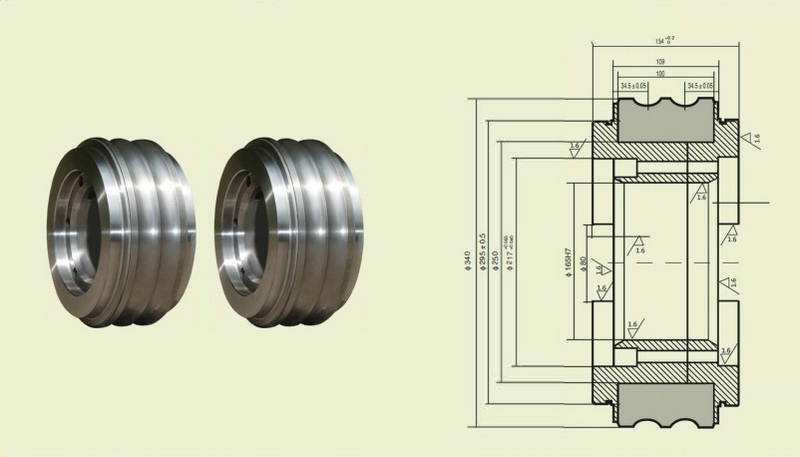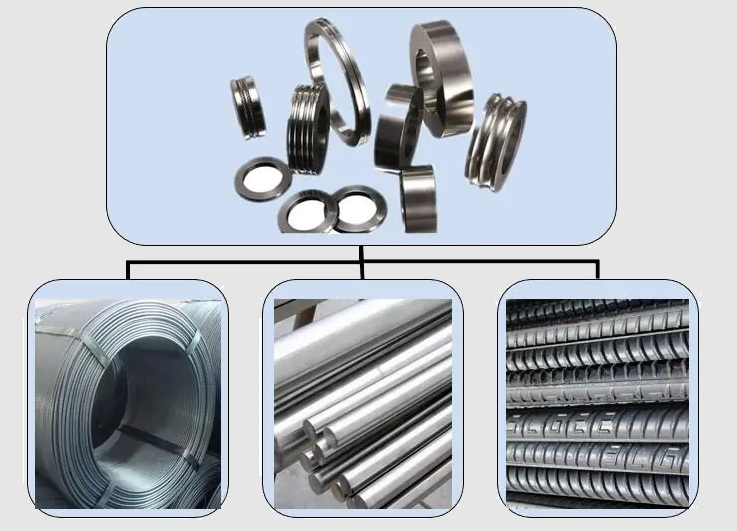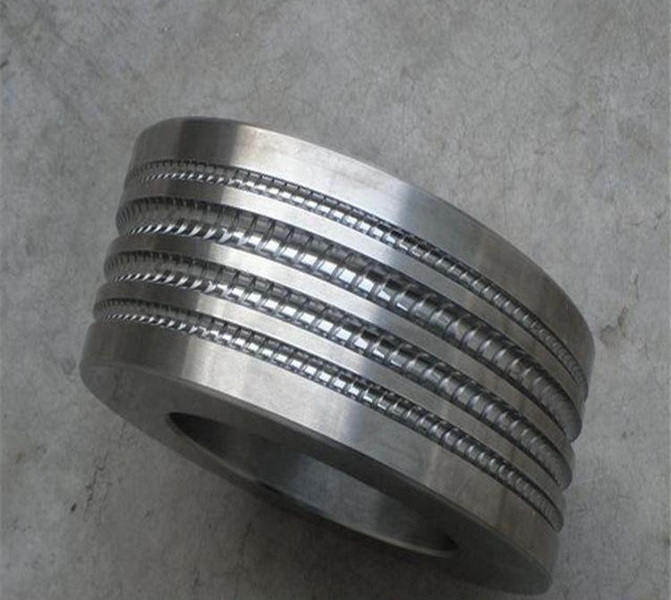Content Menu
● Introduction
● Understanding Carbide Roll Rings
>> The Composition of Carbide Roll Rings
● Key Benefits of Carbide Roll Rings
>> High Wear Resistance
>> Enhanced Durability
>> Improved Production Efficiency
>> Cost-Effectiveness
● Applications in the Manufacturing Industry
>> Hot Rolling Mills
>> Cold Rolling Mills
>> Strip Processing Lines
>> Shearing and Cutting Operations
>> Tube and Pipe Manufacturing
● Maintenance and Care for Carbide Roll Rings
>> Regular Inspections
>> Cleaning and Lubrication
>> Monitoring Operating Conditions
>> Replacement Planning
● Future Trends in Carbide Roll Ring Technology
>> Innovations in Material Science
>> Increased Automation
>> Sustainability Considerations
● Conclusion
● Related Questions
>> 1. What are the advantages of using carbide roll rings over traditional materials?
>> 2. How do carbide roll rings contribute to the efficiency of hot rolling mills?
>> 3. What maintenance practices are essential for carbide roll rings?
>> 4. In what applications are carbide roll rings commonly used in the steel industry?
>> 5. What future trends are influencing carbide roll ring technology?
Introduction
Carbide roll rings have become an essential component in the steel industry, known for their durability, wear resistance, and ability to enhance production efficiency. As manufacturers strive for higher productivity and lower operational costs, the demand for high-performance materials like carbide roll rings continues to grow. This article explores the common applications of carbide roll rings in the steel industry, highlighting their benefits and the critical role they play in various manufacturing processes.

Understanding Carbide Roll Rings
Carbide roll rings are made from cemented carbide, a composite material that combines tungsten carbide particles with a metallic binder, typically cobalt. This unique composition gives carbide roll rings their exceptional hardness and wear resistance, making them ideal for high-stress applications in the steel industry. Unlike traditional steel rings, carbide roll rings can withstand extreme conditions, including high temperatures and abrasive environments, which are common in steel production.
The Composition of Carbide Roll Rings
The primary components of carbide roll rings include:
- Tungsten Carbide: Known for its hardness, tungsten carbide provides the primary wear resistance.
- Cobalt Binder: This metallic binder helps to hold the tungsten carbide particles together, enhancing toughness and impact resistance.
This combination results in a material that not only lasts longer than conventional materials but also maintains its performance under challenging conditions.
Key Benefits of Carbide Roll Rings
High Wear Resistance
One of the most significant advantages of carbide roll rings is their high wear resistance. In the steel industry, where rolling processes involve constant friction and pressure, traditional materials often wear down quickly, leading to frequent replacements and increased downtime. Carbide roll rings, however, can endure these harsh conditions, significantly extending their service life and reducing maintenance costs.
Enhanced Durability
Carbide roll rings are designed to withstand extreme conditions, including high temperatures and corrosive environments. This durability is crucial in steel manufacturing, where equipment is often exposed to intense heat and chemical reactions. The ability of carbide roll rings to maintain their structural integrity under such conditions ensures consistent performance and reliability in production.
Improved Production Efficiency
The use of carbide roll rings can lead to improved production efficiency. Their ability to maintain precise dimensions and resist wear means that manufacturers can achieve higher production rates without compromising quality. This efficiency is particularly important in high-speed rolling mills, where even minor delays can result in significant financial losses.
Cost-Effectiveness
While the initial investment in carbide roll rings may be higher than traditional materials, the long-term savings are substantial. Reduced maintenance, fewer replacements, and increased production efficiency contribute to a lower total cost of ownership. Manufacturers who switch to carbide roll rings often find that the benefits far outweigh the initial costs.
Applications in the Manufacturing Industry
Carbide roll rings are utilized in various applications within the steel industry, each benefiting from the unique properties of this advanced material. Here are some common applications:
Hot Rolling Mills
In hot rolling mills, steel is processed at high temperatures to achieve desired shapes and thicknesses. Carbide roll rings are used in the rollers of these mills due to their ability to withstand the extreme heat and pressure involved in the process. Their wear resistance ensures that the rollers maintain their shape and performance over time, leading to consistent product quality.
Cold Rolling Mills
Cold rolling mills operate at lower temperatures but require high precision and surface finish. Carbide roll rings are ideal for these applications as they provide the necessary hardness and dimensional stability. The use of carbide roll rings in cold rolling mills helps achieve smoother surfaces and tighter tolerances, which are critical for producing high-quality steel products.
Strip Processing Lines
In strip processing lines, steel strips are produced and processed for various applications. Carbide roll rings are employed in the rollers and guides to ensure smooth movement and accurate positioning of the strips. Their durability reduces the risk of defects during processing, leading to higher yields and better-quality products.
Shearing and Cutting Operations
Carbide roll rings are also used in shearing and cutting operations within the steel industry. Their hardness allows them to maintain sharp edges, making them effective for cutting through thick steel materials. This application is crucial for manufacturers looking to produce precise cuts without excessive wear on their equipment.
Tube and Pipe Manufacturing
In the production of tubes and pipes, carbide roll rings play a vital role in shaping and forming processes. Their ability to withstand high pressures and maintain dimensional accuracy ensures that the final products meet stringent quality standards. The use of carbide roll rings in this application contributes to the overall efficiency and reliability of tube and pipe manufacturing.

Maintenance and Care for Carbide Roll Rings
To maximize the lifespan and performance of carbide roll rings, proper maintenance is essential. Here are some best practices for maintaining these critical components:
Regular Inspections
Conducting regular inspections of carbide roll rings can help identify wear and damage early. This proactive approach allows manufacturers to address issues before they lead to equipment failure or production delays.
Cleaning and Lubrication
Keeping carbide roll rings clean and properly lubricated is crucial for optimal performance. Contaminants can cause excessive wear, while adequate lubrication reduces friction and heat buildup during operation.
Monitoring Operating Conditions
Monitoring the operating conditions of machinery using carbide roll rings can help identify potential problems. Factors such as temperature, pressure, and load should be regularly assessed to ensure that the equipment operates within safe limits.
Replacement Planning
While carbide roll rings are durable, they will eventually wear out. Planning for timely replacements can prevent unexpected downtime and maintain production efficiency. Manufacturers should establish a replacement schedule based on usage patterns and inspection results.
Future Trends in Carbide Roll Ring Technology
As the steel industry continues to evolve, so too does the technology behind carbide roll rings. Several trends are shaping the future of these critical components:
Innovations in Material Science
Advancements in material science are leading to the development of even more durable and efficient carbide roll rings. Researchers are exploring new compositions and manufacturing techniques that could further enhance wear resistance and performance.
Increased Automation
The trend towards automation in the steel industry is also impacting the use of carbide roll rings. Automated systems require components that can withstand higher speeds and loads, making the durability of carbide roll rings even more critical.
Sustainability Considerations
As sustainability becomes a priority in manufacturing, the steel industry is looking for ways to reduce waste and improve efficiency. Carbide roll rings, with their long lifespan and reduced maintenance needs, align well with these sustainability goals.
Conclusion
Carbide roll rings are indispensable in the steel industry, offering numerous benefits that enhance production efficiency, reduce costs, and improve product quality. Their applications in hot and cold rolling mills, strip processing lines, shearing operations, and tube manufacturing highlight their versatility and importance. As technology continues to advance, the role of carbide roll rings will only become more significant, ensuring that manufacturers can meet the demands of a competitive market.

Related Questions
1. What are the advantages of using carbide roll rings over traditional materials?
Carbide roll rings offer superior wear resistance, enhanced durability, improved production efficiency, and long-term cost savings compared to traditional materials.
2. How do carbide roll rings contribute to the efficiency of hot rolling mills?
Carbide roll rings withstand high temperatures and pressures, maintaining their shape and performance, which leads to consistent product quality and reduced downtime.
3. What maintenance practices are essential for carbide roll rings?
Regular inspections, cleaning and lubrication, monitoring operating conditions, and planning for timely replacements are crucial for maintaining carbide roll rings.
4. In what applications are carbide roll rings commonly used in the steel industry?
Carbide roll rings are commonly used in hot and cold rolling mills, strip processing lines, shearing operations, and tube and pipe manufacturing.
5. What future trends are influencing carbide roll ring technology?
Innovations in material science, increased automation, and sustainability considerations are shaping the future of carbide roll ring technology in the steel industry.
















